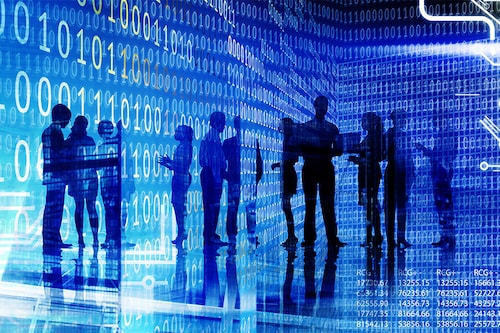Gearing up for the digital workforce
Robotics, albeit not new conceptually, has become mainstream in replacing physical human tasks a.k.a blue collar, in traditional terms, that are repetitive in nature


'The machines are coming'. Five years back, this could be a teaser tagline for a sci-fi movie. Now, it is a newspaper headline reflecting an impending reality. Only, this one doesn’t spell doom - as some might want you to believe– but rather another step in the automation journey that has taken enterprises forward in the last few decades. Evolution of Digital WorkforceFor enterprises, evolution of digital beyond SMAC (Social, Mobile, Analytics, Cloud) to mainstream adoption of IoT, robotics, AI, and next generation digital platforms, offers opportunities that couldn’t even be imagined previously. Automation is moving from hardcore enterprise applications to a broad-based orchestration of enterprise resources. These resources span across people, processes, systems and things – within the enterprise and also outside of it. This is where an unprecedented opportunity to tap digital workforce as another resource is created. This digital workforce comprises multiple forms of mimicking and augmenting the traditional human workforce. Robotics, albeit not new conceptually, has become mainstream in replacing physical human tasks (a. k. a blue collar in traditional terms) that are repetitive in nature. Similarly, RPA (Robotic Process Automation) is augmenting or mimicking the mundane and repetitive white collar, or knowledge worker activities. IoT offers the opportunity to tap multitude of data hitherto hidden within machines, providing the opportunity to monitor, control and orchestrate them better in the broader spectrum of processes. Machine language and AI are slowly becoming a viable alternative to human intelligence in many areas. Then we have digital sensing, which lends responsiveness and context to the customer engagement workforce. The question is, are you geared up for the digital workforce?Enterprises realise how much can be accomplished with this digital workforce. But, are they prepared?There are two key aspects to this preparation. One, how do you decide where to leverage these technologies effectively and what’s the path that should be taken? Like any work, there is a transition involved when you augment or replace any capability with another. In the past, we did that with business rules management, where a lot of routine policy and decision making was moved to a centralised and automated way of making rule based decisions. Similarly, we automated the routing and orchestration of workflows with BPM (Business Process Management). RPA offers a similar proposition for the last mile of task automation in the whole business process orchestration. Of course, many use cases of RPA involve automation of the individual work pieces of voluminous human workforce, but when combined with BPM, the benefits of RPA transcend the activity level benefits and yield process outcomes faster and more effectively. Similarly, digital sensing, machine learning and AI offer the opportunities to improve certain areas of work. However, one needs to look at it from a broader mindset and apply them in conjunction with business outcomes. That analysis is a key step. Second, and even more important aspect, is how does digital workforce work in conjunction with human workforce and plethora of existing technology investments? This sounds simple to begin with, but can become very complicated. The reason is that you are not just adding more automated capability, but incorporating additional workforce that brings not only the technological capability but also the potential of creating another set of silos. Most of these technologies, namely IoT, AI, machine learning, RPA, Digital Sensing add to the resources that an organization must manage. There are more data points to process, more workers to manage and a larger set of functional complexities to deal with. Adding digital workforce without connecting them with the broader organization effectively can backfire. This is even more critical because, a key resource in the whole equation (in form of humans or in form of machines) is the one that ‘can think and act’. Earlier people formed a bridge between the two worlds, and now that bridge is fading away. People would do tasks that cannot still be done by machines – i. e. more and more of and decision making and knowledge worker activities. But, as these self-managed set of workers join the workforce, the need for an elevated loosely coupled orchestration is paramount. So, in order to gear up for the digital workforce, enterprises need to think of themselves as Value Web – as ecosystems where all their resources such as people, processes, systems and things can connect and add value. For that to happen, you need to elevate orchestration from systems level automation to a broader business process platform. This is especially critical when you think of IoT or AI where additional resources are getting added to enterprise ecosystem for further orchestration. We could call it Intelligent BPM or digital process platform, or whatever suits the nomenclature, but that’s beside the point. The key takeaway is that enterprises need to develop the capability to connect and orchestrate resources in a loosely-coupled manner. Going forward, the ability to connect people, processes, systems and things to deliver value will be the clincher. By Virender Jeet - Sr. VP Technology, Newgen Software
First Published: Dec 01, 2017, 12:01
Subscribe Now